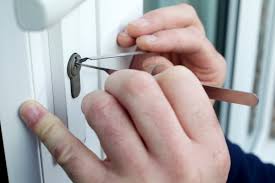Cambridge Lock Picking Tools
Cambridge Locksmith (519) 489-2586
Cambridge Lock Picking Tools
Ever wonder which locksmith tools are used to lock pick your door lock? Read more about the professional locksmith equipment used by the pros and how it works.
How exactly does a locksmith lock pick a door? Does it have anything to do with the tools a locksmith uses? Can someone lockpick a door lock on their own? The answer is yes to all of the above. However, it is important to remember that lockpicking should only be done by licensed and trained professionals, because: A. the law requires it B. an amateur could cause irreversible damages to locks, keys and property.
So what edge do the locksmith tools give locksmiths?
Let’s just say it’s all a matter of leverage. You see locks basically work on the notion that small pins or plugs hold a locking mechanism in place.  Your key is your leverage, used to push these pins exactly into the right place (the shear line position) so that they unlock the locking mechanism. A good example of such leverage is the cylinder lock pin-and-tumbler design mechanism where lock pins serve as a movable damn allowing unlocking movement only if you have the right key.
Your key is your leverage, used to push these pins exactly into the right place (the shear line position) so that they unlock the locking mechanism. A good example of such leverage is the cylinder lock pin-and-tumbler design mechanism where lock pins serve as a movable damn allowing unlocking movement only if you have the right key.
To manipulate such lock mechanisms locksmiths use different tools, from plug spinners and shear line tension wrenches to electric pick guns (drills basically).
- Plug spinners are used to flip plugs to the unlocked position by applying pressure to the lock.
- Tension wrenches are used to allow pressure to be applied to the side of a cylinder lock key slot in order to allow pins to slide correctly into the shear line. Basically this tool allows the free use of both of your hands instead of just one while the other applies turning pressure (the tension wrench keeps a steady pressure on the shear line instead of your hand).
- Electric pick guns – electric lockpicking tools with removable lockpick tips. There are spring electric pick guns and electric pick guns. Both work on the same principal – inserting the lock pick tip into the lock and making it hit the bottom pinstack. This makes the pins jump up in their slots and pass the shear-line; if all pins pass the shear line at the same time the plug can be moved and the lock will open.
But what if you’re not a locksmith?
Can using home makeshift items provide the same effect? Well, what do you think? The answer is NO. For simple locks certain items lying around the house might do the trick, however in all cases these makeshift techniques will take much longer and will damage either your lock cylinder, break tumbler pins or even damage door handles door frames and painting.
Recent Comments